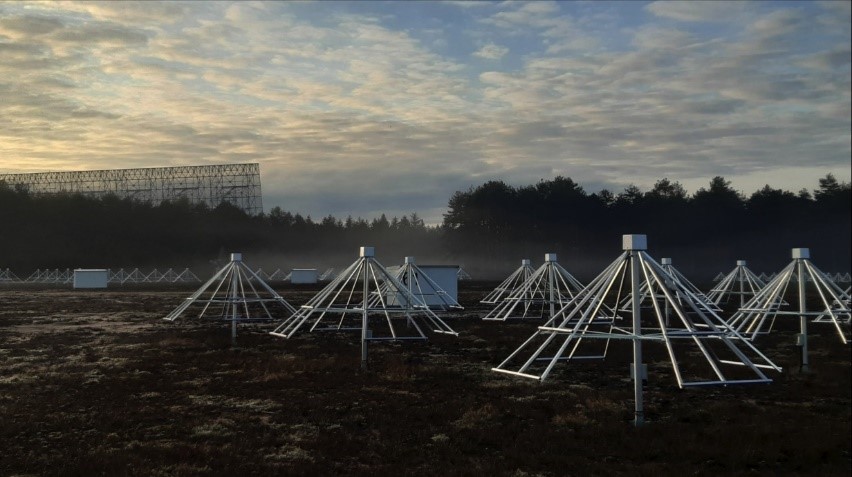What is NenuFAR
Deployed at the Nançay Radio Astronomy Observatory, in the Centre-Val de Loire region, 200 kilometers south of Paris, NenuFAR (acronym for New Extension in Nançay Upgrading LOFAR), is a very large low-frequency radio telescope, which is among the most powerful in the world in its frequency range : between 10 and 85 MHz. This range corresponds to the lowest possible radio spectral "window" observable from the surface of the Earth.
What can be observed ?
Observations in this frequency range, largely unexplored with this sensitivity, concern most celestial objects with as privileged targets the detection of exoplanets in radio, the search for the radio signal of the formation of the first stars and galaxies (the Cosmic Dawn), as well as the study of pulsars at low frequency.
With NenuFAR we can also study :
- the interstellar medium of our Galaxy,
- galaxies and clusters of galaxies,
- active galactic nuclei,
- but also many astronomical phenomena which have the particularity to vary in time :
- planetary storms flashes,
- radio bursts of the magnetosphere of Jupiter, of the Sun, or linked to the entry in the atmosphere of cosmic or Gamma rays,
- as well as certain transient events whose nature is still mysterious such as FRBs (Fast Radio Bursts).
A SETI program is conducted in parallel with astronomical observations, as well as amateur observations (meteors, reflections on the Moon...).

NenuFAR has been labeled since 2014 "pathfinder " to which is allocated 10 to 20 h of observing time of the large international radio astronomy project, SKA (Square Kilometre Array).
The call #1 is addressed to the whole community of radio astronomers (mainly professionals, but amateurs are not excluded) and concerns the period from December 1, 2022 to May 31, 2023.
___________
Submit an observing program: :
Download Documents
___________
Built to 87% of its capacity, NenuFAR is already being used in "Early Science" mode since July 2019 by about 15 science teams that are operating it for key programs (KP) in parallel with its technical development.
Eventually, NenuFAR will bring together 1,938 dual-polarized antennas, hierarchically distributed in "mini-arrays" of 19 antennas. Of the 102 mini-arrays planned in total (96 in the core + 6 remote), 84 are already fully operational.
The completion of the construction of the core is planned for the end of 2022. Intensive work is underway to increase the overall performance of the instrument and improve its standard imaging pipeline. Tools for processing beam mode observations are already available.
| Amateur radio astronomers have been collaborating since the beginning of the project in the testing and use of NenuFAR. Grouped in a KP "Amateur Radio", to which is allocated 10 to 20 h of observing time per semester, they have conducted so far observations of radio beacons, meteors and signal reflections on the Moon, in beam mode, dynamic spectrum and waveform. Their feedback is always appreciated by the project team |
|---|
| August 2014 Construction of a next generation radiotelescope starts at Nançay | |
| July 2019 A new radio telescope, NenuFAR enters into scientific exploitation | |
| October 2019 Inauguration of NenuFAR, a radiotelescope unlike any other in the world->art4139] | |
| December 2021 NenuFAR officially becomes a LOFAR super station |




